Sharks on Film: A Complete History
As Jason Statham gets ready to punch a shark in The Meg, it’s time to take a closer look at cinema’s greatest sea monster
This article comes from Den of Geek UK.
Steven Spielberg ruined sharks. Not movie sharks, that is, but the real ones that are now forever associated with eating swimmers. No amount of lovely David Attenborough documentaries could save their reputation after Jaws came out in 1975, and ‘Galeophobia’ is now one of the world’s most common fears. Sharks are even apparently the one thing that Donald Trump is really frightened of (along with stairs, immigrants, and former porn stars).
“Jaws was a turning point for Great White sharks,” says Oliver Crimmen, the fish curator at the Natural History Museum in London, speaking to the BBC. “I actually saw a big change happen in the public and scientific perception of sharks when Peter Benchley’s book Jaws was published and then subsequently made into a film.” Benchley went on to retract everything he put in his book, spending the rest of his life campaigning for the protection of sharks. But the truth is that Jaws wasn’t the only film responsible for giving sharks a bad name–with a few movies about killer sharks made before 1975, and a whole lot that came after…
The Early Days
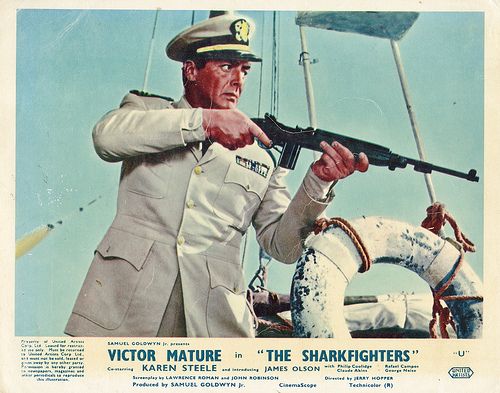
The first films made about evil sharks were few and far between–mostly because they all tried to use real evil sharks. Western author Zane Grey filmed himself fishing for Australian sharks in 1936’s White Death, a movie that tries to make fun of the local conservationists who plead with him not to kill any animals. Errol Flynn also tried to film some shark action for his staged documentary, The Cruise Of The Zaca, in 1952 (a film that also saw him poking a real crocodile with a stick to try and get it to look more ferocious), but the first proper shark story is Jerry Hopper’s The Sharkfighters in 1956.
Basically telling the same true story that Quint later retells in Jaws, the film is about the real sinking of the USS Indianapolis during WWII, a tragedy that resulted in the biggest shark attack in history. Victor Mature stars in the film that actually has some pretty good underwater action scenes, notable because Hopper uses footage of real tiger sharks instead of rubber dummies.
Sharks had an easier ride through much of the ’50s and ’60s, confined to individual scenes in B-movies about other critters, and the next proper killer shark movie was bad enough to almost sink the genre before it started. Shark! was directed by Samuel Fuller in 1969, starring Burt Reynolds as a gunrunner diving for treasure in shark-y waters. Despite the pedigree, the film was pretty awful–and was basically just an excuse for Fuller and Reynolds to hang out in Mexico for a few months. When a stuntman on set was killed by a shark, the studio were delighted and Fuller was horrified, quitting the whole production after producers tried to cash in on the bad press.
It was this legacy of infrequent, awful, dangerous shark movies that calmed the waters enough in 1975 for no one to see Jaws coming.
Enter Bruce
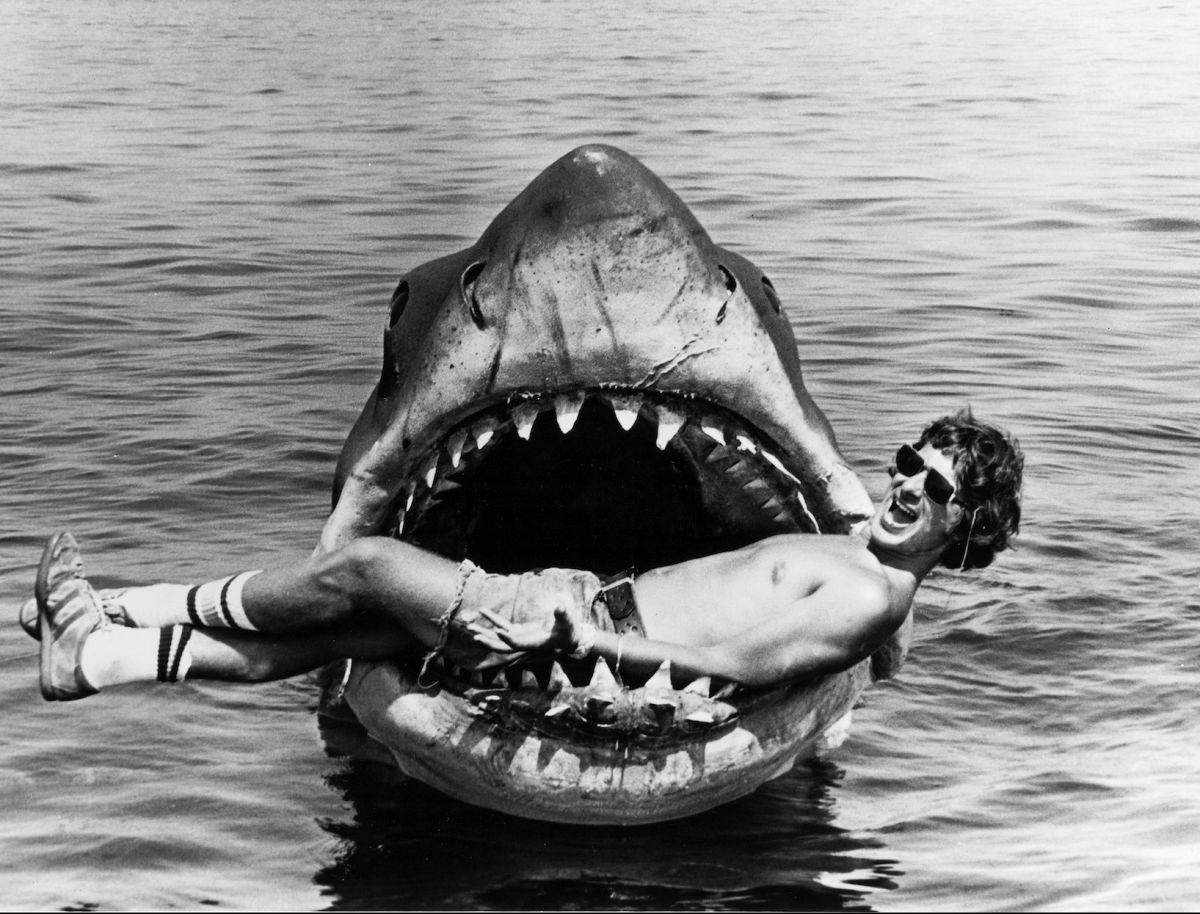
No one in Hollywood particularly wanted to make Jaws, and no one was too happy when young upstart Steven Spielberg started running ridiculously over time and budget. The production is famous for being one of the worst in history: all documented in actor and screenwriter Carl Gottlieb’s brilliant book, The Jaws Log. To be fair to Spielberg, none of it was his fault, and most of the problems were down to the faulty wiring inside the mechanical shark, Bruce.
To everyone’s surprise, the film was actually pretty good. Very good actually. Okay, it’s arguably a masteprice. Breaking box office records at the time, Jaws is now rightly considered one of the best films ever made and the best movie ever made about sharks, to which all other shark movies will forever be compared. And there were certainly a lot of them to come…
So. Many. Sequels.
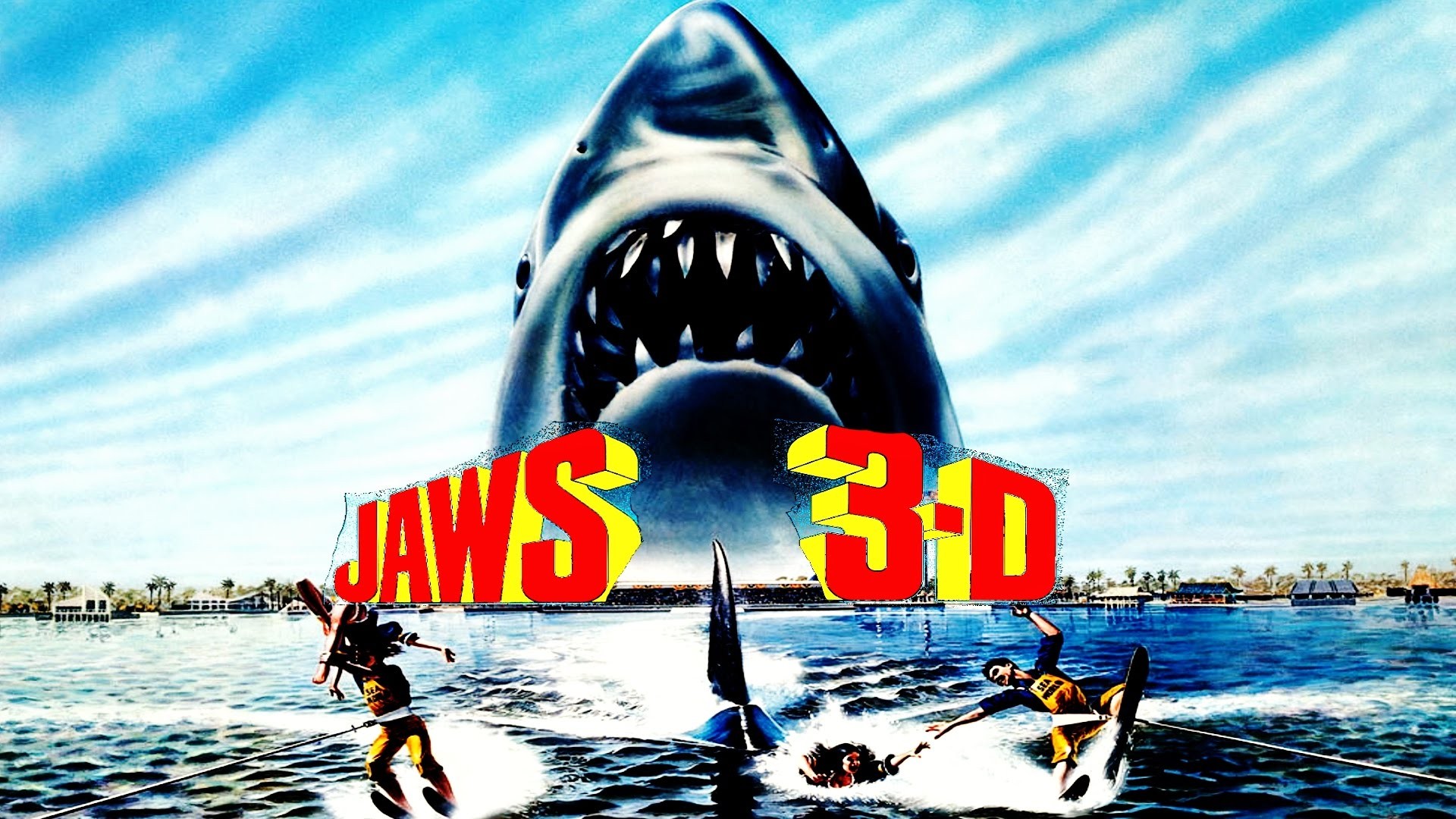
The first rule of Hollywood is to follow the money. If Jaws sold a ton of tickets, we need more Jaws, dammit. That inevitably meant greenlighting a sequel or three, but it also meant a sudden rush for other shark movies in what became a feeding frenzy for bad imitators.
The ’70s and ’80s were awash with killer shark movies, getting fewer and cheaper as the Jaws effect started to wear off. Mako: The Jaws Of Death was the first knock-off to steal the idea (and the title) in 1976, along with the scarily similar Shark Kill, but there were plenty more to follow.
First there were the Mexican versions (presumably made because they had easier access to real sharks–although none featured any decent wildlife footage). Tintorera (1977), Cyclone (1978), and Bermuda: Cave of the Sharks (1978) were all rolled out in quick succession, and they pretty much all had posters that looked something like this:
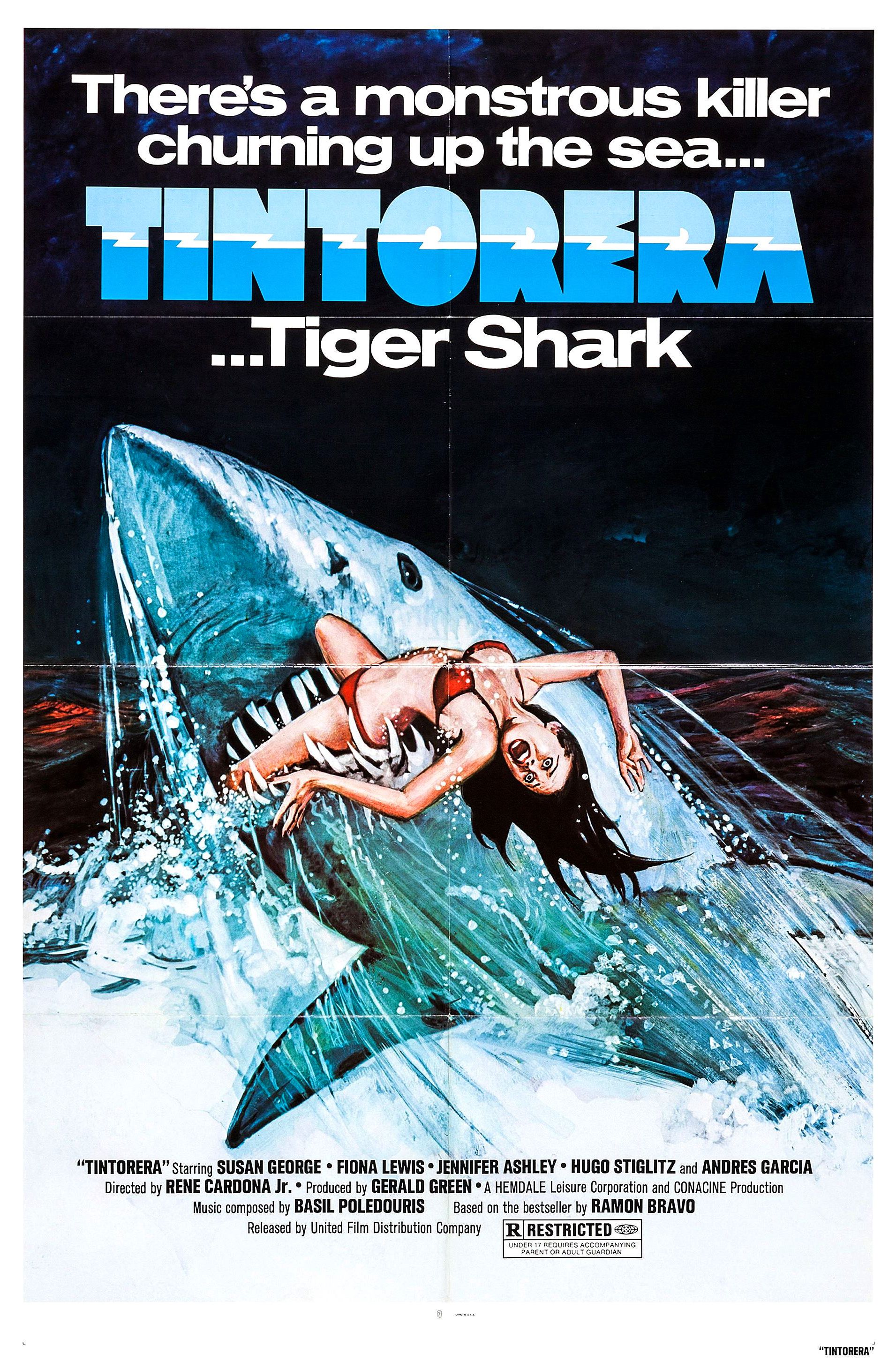
Yes that’s supposed to be a Tiger shark and no, that’s not how big they really are.
Next up came the Italians. Great White was released in 1981, but it only spent one month in theaters after a lawsuit proved that it was exactly the same film as Jaws. Night of the Sharks tried to avoid the same thing by working in a bizarre plot about a gang who bug a conversation with the president–and the whole thing ends up with a showdown between Treat Williams and a trained Great White called Cyclops. Deep Blood (1989) topped them all by clearly not having enough money to film any actual sharks, instead cutting in stock nature footage and bits of other movies.
All the while, the official Jaws sequels were getting worse. Jaws 2 (1978) isn’t too bad and makes for a fairly decent shark movie even without Spielberg’s directorial flourishes. Jaws 3-D (1983) tried to jump on the 3D wagon about 30 years before the technology was ready, and Jaws: The Revenge (1987) pretends it never even happened, backtracking over the timeline, and making it’s own awful film in the process.
Jaws: The Real Revenge

If one other film changed everything for shark movies, it was Renny Harlin’s Deep Blue Sea (1999). Arriving just when we needed it the most, the film upended the whole genre and made sharks cool again. “Bigger. Smarter. Faster. Meaner” ran the tagline, and it pretty much sums up the angle: sharks are looking old, and they need a rebranding. Make them scarier, give them genetic modifications, and set the film somewhere that’s not another Mexican cove and it could work. And it did. Still (possibly) the second best shark movie ever made, Harlin’s film saved the genre and started the frenzy going again.
Suddenly, sharks were all the rage once more. Now filmmakers had free reign to mix their genres, the hybrid movie was born from the likes of 2005’s Hammerhead (“half man, half shark, total terror”) and Spring Break Shark Attack (“This year, spring break really bites!”), and 2008’s Shark Swarm (“Fear travels in packs…”).
Eventually, the inevitable happened. If you keep on pushing the boundaries and making things crazier, you’re bound to hit a fork in the road. One road led to Open Water (2003), a stripped-back independent horror that actually made shark attacks seem frighteningly real–and the other road led to Jedward fighting a sharknado…
All Bets are Off
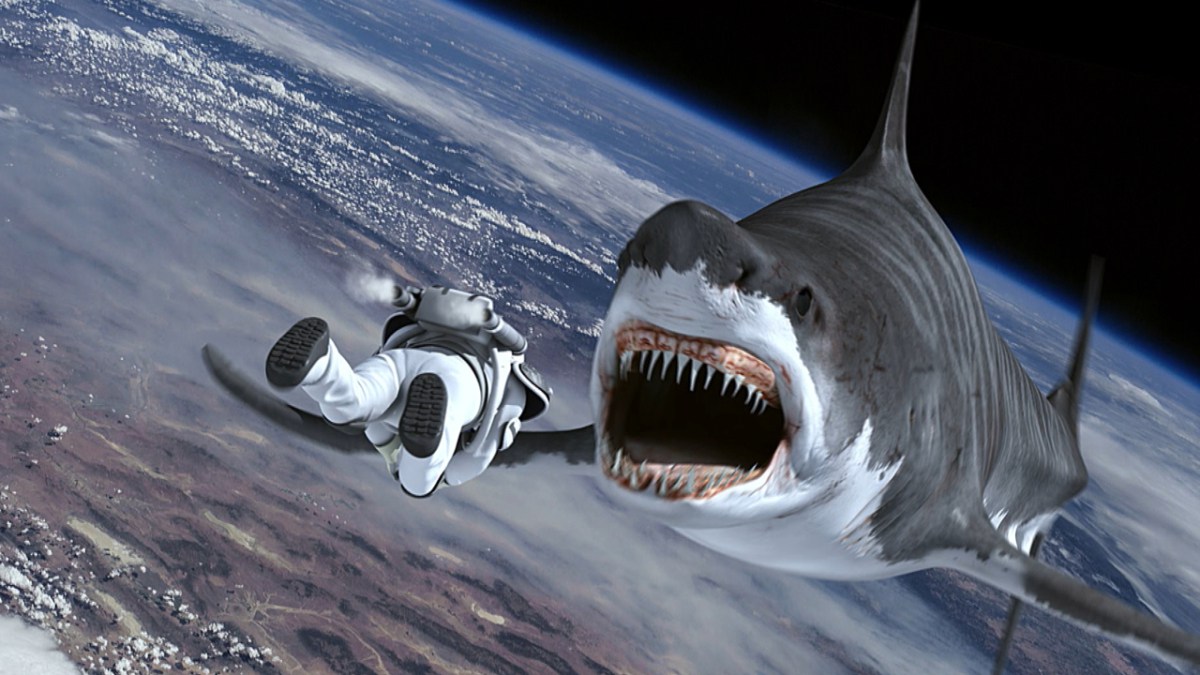
The never-ending Sharknado series is only part of the modern landscape that the killer shark movie finds itself in. Indie B-movie factory The Asylum is responsible for much of the shark output since 2010, when they released Mega Shark vs. Giant Octopus, kick-starting a thirst for intentionally bad, sort-of-ironic grindhouse flicks that probably owes plenty to the runaway success of Snakes on a Plane (2006).
The titles tell you pretty much what you’re going to get: from 3-Headed Shark Attack (2015) and Sharkansas Women’s Prison Massacre (2015), to Swamp Shark (2011), Ghost Shark (2013), and Sharktopus vs. Whalewolf (2015). Only zombies seem to have sharks beat when it comes to sheer range and diversity (and you can get your fix of both with 2015’s Zombie Shark).
At the same time, there have been a couple of attempts to bring the genre back to reality. 2017’s British survival horror, Cage Dive, had its problems, but at least it didn’t have any cameos from The Real Housewives of Beverly Hills (see: Sharknado 3: Oh Hell No!). Open Water 3: Cage Dive (2017) did some interesting stuff with the found footage angle, but it was Jaume Collet-Serra’s 2016 effort, The Shallows, that really made people start talking about Jaws again. Propped up by a terrific performance from Blake Lively, The Shallows does exactly what you want a shark movie to do (i.e., makes you never want to go swimming in the sea again). Back to basics and without a cameo in sight, it represented a new hope for killer sharks everywhere.
But what does The Meg mean for the genre? On the one hand, it’s a big budget Hollywood production directed by Jon Turteltaub (National Treasure, The Sorcerer’s Apprentice) with an underwater setting that looks a lot like the one in Deep Blue Sea. On the other hand, it has Jason Statham punching a 75-ft shark in the face. Is this the start of a new chapter in the Jaws legacy or just another shark movie?
Find out on Aug. 10 when The Meg arrives in theaters.